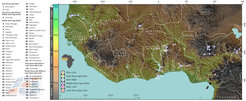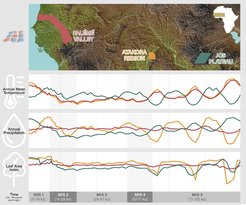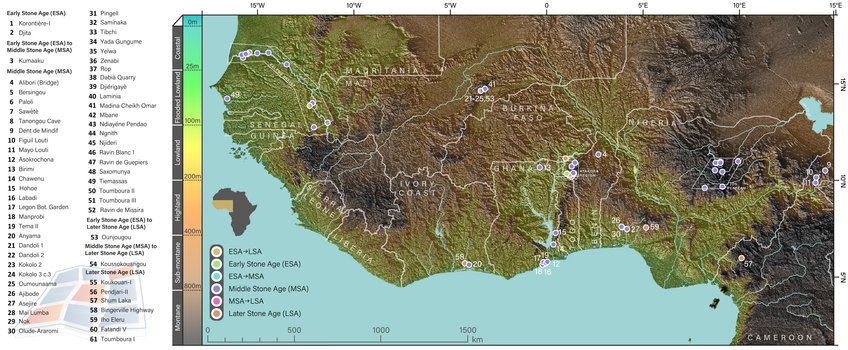A New Map of Pleistocene Archaeological Sites in West Africa
A publication in the Journal of Maps synthesizes all well-contextualized Stone Age sites in Sub-Saharan West Africa
African paleoanthropological studies typically focus on Eastern, Southern and Northern Africa, which hold the highest density of Pleistocene archaeological sites. But a growing body of research reveals that West Africa was also crucial to our species’ evolution and also features a high number of sites.
Unlike for the better-known regions of Northern, Eastern, and Southern Africa, there was previously no comprehensive review and distribution map of Pleistocene archaeology in West Africa. This map fills this major gap, giving archaeologists and anthropologists a single major body of work with high-resolution, reliable sites for the entire sub-Saharan West African region.

Pleistocene sights and climate reconstructions
To create the new map, a team led by researchers from the ‘Lise Meitner’ Pan-African Evolution research group at the Max Planck Institute for the Science of Human History correlated detailed elevation and ecoregional data with select well-documented paleoanthropological sites. The researchers carried out new fieldwork projects and reviewed published literature on West African, selecting each Pleistocene site based on the presence of: (1) documented archaeological stratification or more than 10 characteristic artefacts, (2) published coordinates, and (3) published chronometric ages or relative dating.

In addition to a thorough review of all the well-contextualized Pleistocene sites known from West Africa and the modern boundaries of ecoregions, the map also includes 1,000- and 2,000-year interval climate reconstructions for three subregions of high archaeological interest.
“Our climate reconstructions raise an important aspect of research that up until now has been poorly developed: the complex environmental history of West Africa,” says first author Jacopo Niccolò Cerasoni. “Our map shows that the environmental footprint for each subregion during the last 120 thousand years was extremely different, suggesting that diversified and complex cultural-environmental adaptations existed, but are yet to be discovered.”
Expanding studies of human evolution
The data presented here elucidates the current state of knowledge of Pleistocene West Africa, highlighting the regional potential for human evolutionary studies. Far too often this region is considered secondary to other areas in the continent, but as the new map shows, it contains an extremely high concentration of sites.
“This curated dataset sets a stage for pan-African studies of human evolution and shows the widespread distribution of stone age technology in tropical Africa. Thanks to our paleoclimate modelling we are finally able to show that habitats were not homogeneous in Pleistocene West Africa. Establishing an environmental background to human behavior will aid in future studies of technological diversity and innovation in this under-studied region,” says co-author Dr. Emily Hallett.

